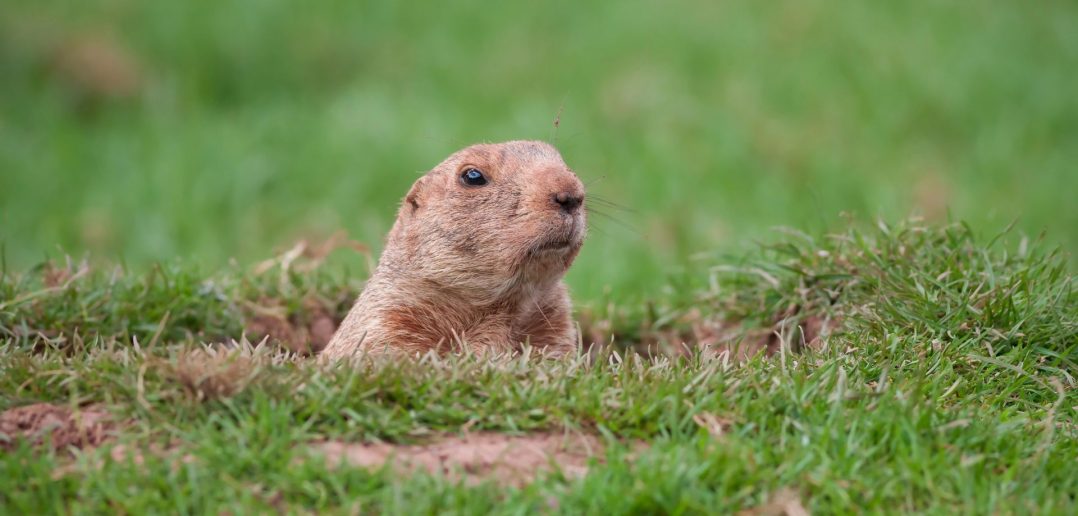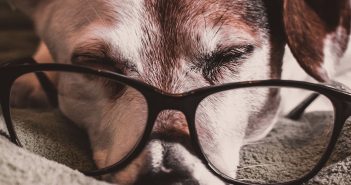In the USA, Groundhog Day remains a quirky tradition where a groundhog is used to predict weather conditions for up to six weeks in advance. According to folklore, if a groundhog sees its shadow at noon on February 2nd, expect six more weeks of wintry weather.
Have you ever noticed dogs acting nervous or cats becoming unusually playful before a storm?
Animal Behavior Before Storms
Many animals are said to exhibit specific behaviors that signal bad weather is approaching. Here are some behaviors attributed to animals predicting weather changes:
- Frogs croak louder and longer than usual.
- Roosters crow later in the day.
- Birds fly lower to the ground and gather on tree branches and telephone wires.
- Pigs squeal more and gathers sticks to make a nest.
- Cows lie down in fields to feed, and to ensure they have a dry spot to lay. Cows may also run around the field with their tails raised high swatting flies before a storm.
- Bees and butterflies seem to disappear from their usual flower beds.
- Ants build up their mounds and may cover the entrances.
- Fish jump out of the water and nip at low flying insects.
The Sixth Sense of Animals
In 2004, during the devastating tsunami in South Asia, wildlife loss was notably minimal compared to human casualties. Reports from Sri Lanka revealed no dead wild animals in affected areas, including elephants, suggesting animals may have sensed the danger in advance. A photographer also reported seeing no animal corpses as he flew over the wildlife reserve – only active wildlife. An amazing fact when you consider the flood waters traveled up to two miles inland into the wildlife reserve.
Theories propose that animals might detect vibrations or hear low-frequency sounds that humans cannot perceive, alerting them to impending disasters in time for them to reach higher and safer ground.
Animal Reactions to Rain and Storms
Fascinating behaviors linked to rain and storms include:
- Dolphins seeking shelter in bays.
- Spiders abandoning their webs before rain.
- Bees staying in their hives.
- Seagulls flying inland.
Even humans report physical sensations like joint pain or sinus pressure before rain arrives.
Weather Lore and Sayings
Animal-related weather lore has been passed down through generations across the globe. Some of the things you may, or may not, have heard include:
- If birds fly low, expect rain and a blow.
- Cats and dogs eat grass before a rain.
- When chickens scratch together, there’s sure to be foul weather.
- A swarm of bees in May is worth a load of hay.”
- If a cat washes her face o’er her ear,
’tis a sign the weather will be fine and clear. - Rainbow in the morning, shepherds take warning.
Rainbow at night, shepherds delight. - Mares tails and mackerel scales,
Make lofty ships carry low sails. - When the wind is in the north, the skillful fisher goes not forth.
When the wind is in the east, ’tis good for neither men nor beast.
When the wind is in the south, it blows the flies in the fish’s mouth.
But when the wind is in the west, there it is the very best. - Fish bite least, with wind in the east.
- If the sparrow makes a lot of noise, rain will follow.
- If the rooster crows on going to bed, you may rise with a watery head.
- Trout jump high, when rain is nigh.
- When sheep gather in a huddle, tomorrow will have a puddle.
- Expect the weather to be fair, when crows fly in pairs.
- If woolly worms are dark, the coming weather will be severe.
- When ladybugs swarm, expect a day that’s warm.
- When pigs carry sticks, the clouds will play tricks.
When they lye in the mud, no fears of a flood.
A Fascinating Connection
While it’s not scientifically proven that animals can predict the weather, their keen senses and unique behaviors offer intriguing insights into the natural world. Animals have a connection to the environment that most humans have long since lost.
This article was been submitted by PetLovers.Com, a forum where you can meet and mingle with other animal lovers.




